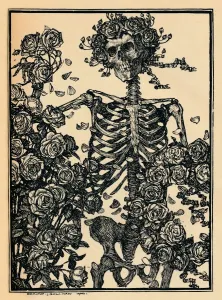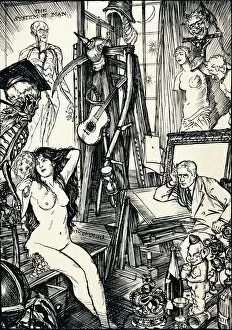Edmund Joseph Collection
Edmund Joseph Sullivan, a talented artist of the early 20th century, left an indelible mark on the world of illustration
All Professionally Made to Order for Quick Shipping
Edmund Joseph Sullivan, a talented artist of the early 20th century, left an indelible mark on the world of illustration. His works spanned various genres and subjects, showcasing his versatility and artistic prowess. In his illustration for "The Rubaiyat of Omar Khayyam" in 1900, Sullivan brought to life the enchanting verses with intricate details and vibrant colors. Each stroke of his brush captured the essence of Khayyam's poetry, transporting readers to a realm filled with beauty and contemplation. Sullivan's talent extended beyond literature as he delved into the realm of classic novels. In his depiction from "The Strange Case of Dr Jekyll and Mr Hyde" by Robert Louis Stevenson in 1927, he masterfully portrayed the duality within human nature. The haunting image evoked both fear and curiosity, leaving viewers captivated by its eerie allure. One cannot overlook Sullivan's skillful interpretation of Miguel de Cervantes' iconic character Don Quixote. Through a pen sketch from "Line: An Art Study" in 1923, he captured Quixote's idealism and determination as he embarked on his legendary quests. The simplicity yet depth conveyed through this sketch showcased Sullivan's ability to convey emotion through minimalistic artistry. However, it was not only literature that inspired Edmund Joseph Sullivan; spirituality also played a significant role in his work. In pieces like "Abou Ben Adhem: - I Pray Thee Then Write Me As One Who Loves His Fellow Men, " created in 1916 (1917), or "And When The Angel Showed Him The Names Of Those Whom Love Of God Had Blest, " also from 1916 (1917), Sullivan explored themes of love for humanity and devotion to God. These illustrations exuded warmth and compassion while inviting viewers to reflect upon their own relationships with others.















